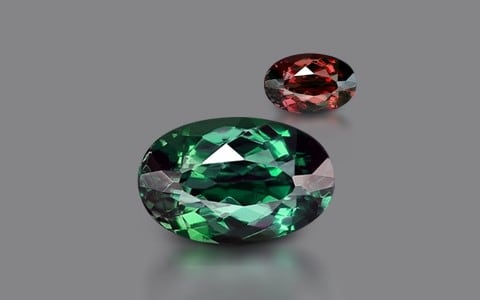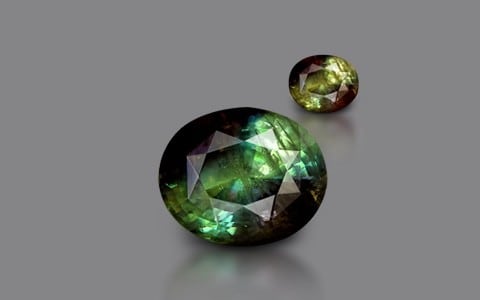
Alexandrite
"Emerald by day, ruby by night"
A high quality Alexandrite is one of the most expensive and rare stones in the world. There are also a lot of synthetic Alexandrites in the market.
One day I was at my jewelers getting a ring sized and the woman in front of me was extremely chatty and animated. She was announcing to everyone in ear shot that her grandmother had passed away and bestowed to her a large very valuable Alexandrite. She had be promised the jewel her entire life and today she was getting it appraised and preparing it for sale.
The stone was very large and perfect, and purplish blue, and I wasn’t going to be the one to give her the bad news that it was synthetic. It was actually just glass, not worth more than a few dollars. Had the stone been real, you would need armed-guards protecting you and the stone. Additionally if the stone was authentic it should have been in a museum, not bouncing around in a cheap cardboard box in someones purse.
Sure enough, the jeweler took one look through the loop and gave the bad news. The woman was shocked and angry, not embarrassed however. I avoided eye contact because ya never know what people are going to do. This woman had been waiting her whole life to strike it rich at this moment and I didn’t wish to be a part of this massive disappointment.
The jeweler attempted to calm the woman with mentions of how the beautiful “piece” should just be something that can remind her of her grandmother, but that was not providing much comfort.
In the 1830’s the finest Alexandrites were found in the Ural mountains of Russia but now most Alexandrites come Sri Lanka, East Africa, and Brazil. These newer locations contain a small amount of fine quality stones but largley they are lesser in quality with muddy hues.
Often estate jewelry can contain Alexandrite from the mountains of Russia which is why collectors are always on the watch for vintage and antique jewelry.
In terms of valuation, size is a large factor. For a high quality Alexandrite, stones up to one carat can be valued at $15,000 a carat where as stones over one carat can reach $50,000 per carat and much more.
Real Alexandrite typically changes color depending on the light. It should be greenish in daylight or fluorescent light and reddish in incandescent light. If instead it changes from vibrant from blue to purple it is almost always a synthetic. If it is large and very clear internally it is likely not authentic as well.
